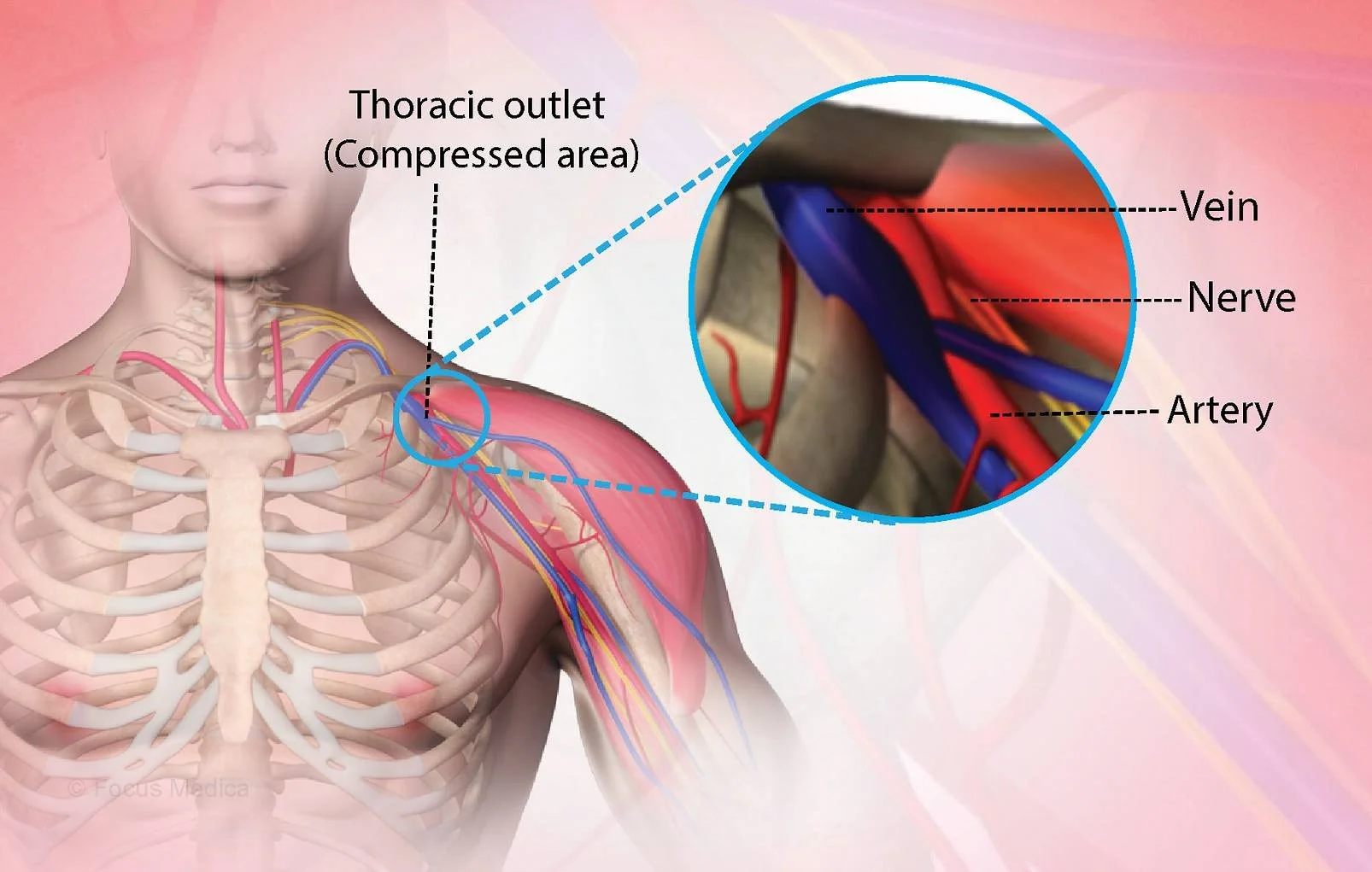Thoracic Outlet Syndrome (TOS) and How Manual Osteopathy Can Help
Have you ever experienced persistent pain, numbness, or weakness in your , shoulders, or arms? If so, you may be suffering from Thoracic Outlet Syndrome (TOS). This condition, often overlooked, arises from compression of nerves or blood vessels in the narrow space between your collarbone and your first rib.
In this article, we mention the causes, symptoms and types of TOS and will explore how a holistic approach, such as manual osteopathy, can provide relief and improve your quality of life.
What is Thoracic Outlet Syndrome (TOS)?
Thoracic Outlet Syndrome (TOS) occurs when nerves or blood vessels in the thoracic outlet—an area between the collarbone and first rib—become compressed. This can lead to pain, numbness, tingling, or weakness in the arms and hands.
TOS can be caused by poor posture, repetitive activities, injury, or even anatomical anomalies.
There are three main types of TOS:
neurogenic (affecting nerves)
vascular (affecting blood flow)
nonspecific (generalized symptoms).
It can impact daily activities and overall quality of life, making proper treatment essential.
How Manual Osteopathy Can Help Thoracic Outlet Syndrome
Manual osteopathy offers a gentle and holistic approach to managing TOS. By addressing the root cause of compression, manual osteopaths aim to restore balance and function to the body.
Postural Assessment and Correction: Poor posture, such as slouching or forward head position, can contribute to TOS. Manual osteopaths work to realign the spine and chest area, helping to reduce pressure on the thoracic outlet.
Soft Tissue Release: Tight muscles, especially in the neck, shoulders, and chest, can exacerbate compression. Techniques like myofascial release and muscle stretching help relieve tension and improve mobility.
Joint Mobilization: Restricted movement in the ribs, spine, or shoulders can contribute to TOS. Gentle mobilization techniques help restore motion and reduce pressure on nerves and blood vessels.
Nerve Mobilization: If nerve entrapment is a significant issue, manual osteopaths can use specific techniques to release and desensitize the affected nerves, improving symptoms like numbness or tingling.
Lifestyle Advice: Manual osteopaths often provide personalized advice on ergonomics, stretching, and exercises to prevent symptom recurrence. For example, simple exercises to strengthen the shoulder girdle can help maintain proper alignment.
Manual osteopathy is especially beneficial for those seeking a non-invasive, drug-free approach to managing TOS. By improving circulation, releasing tension, and enhancing the body’s natural healing ability, manual osteopathy can lead to significant symptom relief and better overall function.
If you suspect you have TOS or struggle with symptoms, consulting a manual osteopath could be a great first step toward recovery.







